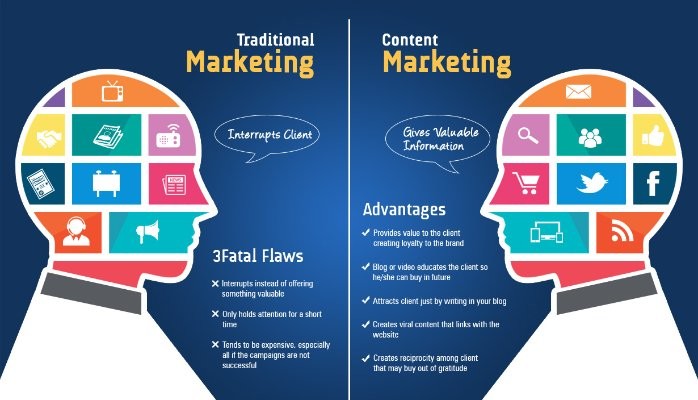Marketing is an essential component of any successful business strategy. As the landscape of marketing evolves, businesses face the challenge of choosing between digital marketing and traditional marketing. Each has its own set of advantages and disadvantages. In this post, we’ll explore both approaches to help you understand which might be the best fit for your business. Finally, we’ll discuss how finding the perfect balance can maximize your marketing efforts.
Digital Marketing: The Modern Approach
Advantages:
- Wide Reach: Digital marketing allows businesses to reach a global audience. With the internet, geographical boundaries are no longer a limitation.
- Cost-Effective: Digital campaigns can be more affordable compared to traditional methods. Platforms like social media, email marketing, and content marketing often offer high ROI with lower costs.
- Targeted Advertising: Digital marketing enables precise targeting based on demographics, interests, and behaviours. This ensures your message reaches the most relevant audience.
- Measurable Results: Tools like Google Analytics and social media insights provide detailed metrics on campaign performance, allowing for data-driven decisions.
- Flexibility and Adaptability: Digital campaigns can be quickly adjusted based on real-time performance data. This flexibility allows businesses to respond to market changes and optimize their strategies.
Disadvantages:
- Intense Competition: The digital space is crowded, making it challenging to stand out. Businesses must continually innovate to capture and maintain attention.
- Dependence on Technology: Digital marketing relies heavily on technology, which can be a barrier for businesses with limited technical resources or knowledge.
- Short Attention Span: Online audiences have short attention spans, making it crucial to create compelling and engaging content to retain their interest.
Traditional Marketing: The Classic Approach
Advantages:
- Tangible Impact: Traditional marketing methods, such as print ads, billboards, and direct mail, create a physical presence that can leave a lasting impression.
- Wider Audience Reach: Certain demographics may be more accessible through traditional media, particularly older generations who may not be as active online.
- Credibility and Trust: Traditional marketing channels often carry a sense of credibility and trust. For example, seeing an ad in a reputable magazine or on TV can enhance brand perception.
- Local Targeting: For businesses targeting a local audience, traditional methods like local newspaper ads, radio spots, and community events can be highly effective.
Disadvantages:
- Higher Costs: Traditional marketing campaigns can be expensive, especially TV and radio ads, which require significant investment.
- Limited Measurability: Measuring the effectiveness of traditional marketing campaigns is more challenging. It can be difficult to track ROI and gather precise data on audience engagement.
- Less Flexibility: Once a traditional campaign is launched, making changes can be costly and time-consuming. This lack of flexibility can be a disadvantage in a rapidly changing market.
Digital Marketing vs Traditional Marketing: Finding the Perfect Balance
Both digital and traditional marketing have their strengths and weaknesses. The key to a successful marketing strategy is finding the right balance that works for your business. Here are a few considerations to help you determine the optimal mix:
- Target Audience: Understand where your audience spends their time. If they are primarily online, digital marketing should be a significant focus. If they engage with traditional media, consider integrating those channels into your strategy.
- Budget: Assess your budget and allocate resources where they will have the most impact. Digital marketing often provides more cost-effective options, but traditional methods can offer substantial value in specific contexts.
- Goals: Define your marketing goals. If you aim to build brand awareness and reach a broad audience, traditional marketing may be effective. For lead generation and engagement, digital marketing can provide more targeted solutions.
- Integration: Consider how digital and traditional methods can complement each other. For example, a print ad could drive traffic to your website, or a TV campaign could promote your social media channels.
Conclusion
In the debate between digital marketing and traditional marketing, there is no one-size-fits-all answer. Both approaches offer unique benefits that can contribute to a successful marketing strategy. At Overthought Films (OTF), we specialize in helping businesses find the perfect balance between digital and traditional marketing to achieve their goals. Contact us to discover how we can tailor a marketing strategy that works best for your business.

